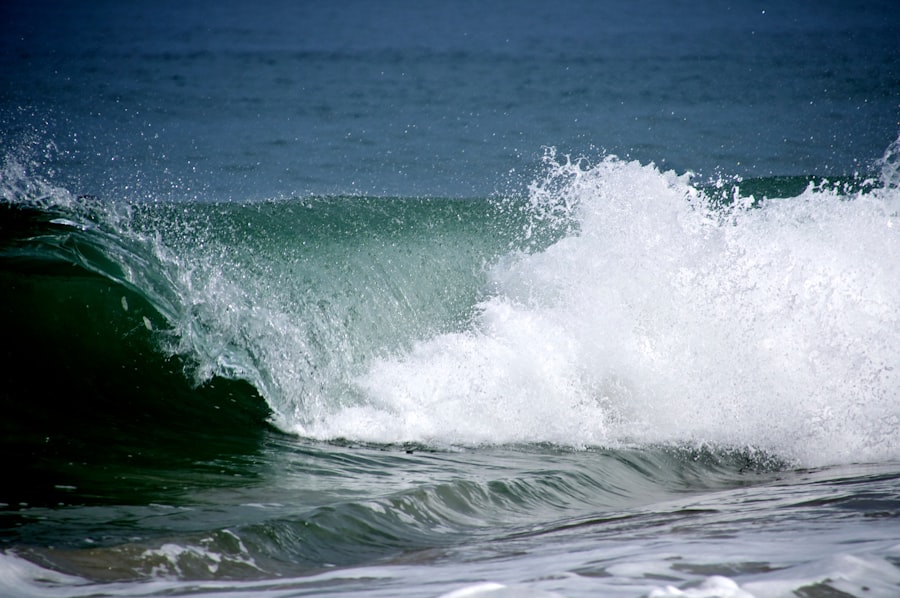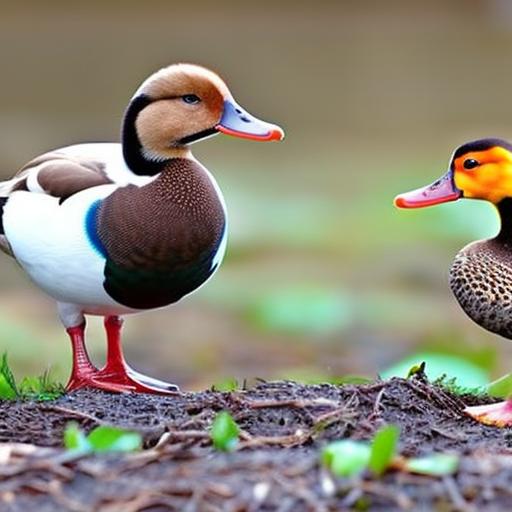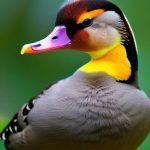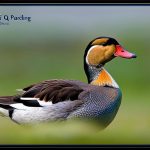Egg laying ducks are a popular choice for backyard farms due to their ability to produce a large number of eggs. These ducks are specifically bred for their high egg production rates, making them a valuable addition to any farm or homestead. In addition to their egg-laying capabilities, there are several other benefits to raising egg laying ducks.
One of the main benefits of raising egg laying ducks is the abundance of fresh eggs they provide. Ducks are known for their ability to lay a large number of eggs, often outperforming chickens in terms of egg production. This can be especially beneficial for those who enjoy baking or have a large family that consumes a lot of eggs. Additionally, duck eggs are larger than chicken eggs and have a richer flavor, making them a popular choice among food enthusiasts.
Key Takeaways
- Egg laying ducks are a popular choice for backyard farms due to their high egg production and low maintenance.
- When choosing an egg laying duck breed, factors such as climate, space, and egg production should be considered.
- The top 10 egg laying duck breeds for backyard farms include the Khaki Campbell, Indian Runner, Welsh Harlequin, Buff, and more.
- Different duck breeds have varying egg laying capabilities, with some producing up to 300 eggs per year.
- Physical characteristics such as size, color, and feather patterns can vary greatly among egg laying duck breeds.
- A balanced diet with proper nutrition is essential for maximizing egg production in ducks.
- Regular health checks and maintenance, such as cleaning and providing adequate shelter, are important for the well-being of egg laying duck breeds.
- Tips for maximizing egg production in ducks include providing a comfortable nesting area and ensuring a consistent light source.
- Market demand for eggs from different duck breeds can vary depending on factors such as taste and availability.
- Choosing the best egg laying duck breed for your farm depends on your specific needs and preferences, but the Khaki Campbell is a popular choice for its high egg production and adaptability.
Factors to Consider When Choosing Egg Laying Duck Breeds
When choosing egg laying duck breeds for your backyard farm, there are several factors that should be taken into consideration. These factors include the climate and environment in which you live, the amount of space available for the ducks, the desired egg production rate, the temperament of the breed, and whether you plan to raise the ducks for meat or eggs.
The climate and environment in which you live is an important factor to consider when choosing egg laying duck breeds. Some breeds are better suited for colder climates, while others thrive in warmer environments. It is important to choose a breed that can withstand the temperatures and weather conditions in your area to ensure the health and well-being of your ducks.
Space availability is another important factor to consider when choosing egg laying duck breeds. Some breeds require more space than others, so it is important to assess how much space you have available for your ducks. Ducks that are overcrowded can become stressed and may not lay as many eggs as they would in a more spacious environment.
The desired egg production rate is another factor to consider when choosing egg laying duck breeds. Some breeds are known for their high egg production rates, while others may not lay as many eggs. If you are looking to maximize egg production, it is important to choose a breed that is known for its high egg-laying capabilities.
The temperament of the breed is also an important factor to consider. Some breeds are more docile and friendly, while others may be more aggressive or skittish. It is important to choose a breed that fits well with your lifestyle and preferences.
Lastly, it is important to consider whether you plan to raise the ducks for meat or eggs. Some breeds are better suited for meat production, while others are specifically bred for their egg-laying capabilities. If your main goal is to produce eggs, it is important to choose a breed that is known for its high egg production rates.
Top 10 Egg Laying Duck Breeds for Backyard Farms
1. Khaki Campbell: The Khaki Campbell duck is one of the most popular egg laying duck breeds. They are known for their high egg production rates, often laying over 300 eggs per year. They have a calm and friendly temperament, making them a great choice for backyard farms. Khaki Campbells thrive in a variety of environments and can adapt well to different climates.
2. Indian Runner: Indian Runner ducks are known for their unique upright stance and slender bodies. They are excellent layers, often producing around 200-300 eggs per year. Indian Runners are active and curious ducks, making them a great choice for those who enjoy watching their ducks roam around the yard. They do well in both warm and cold climates.
3. Welsh Harlequin: The Welsh Harlequin duck is a medium-sized breed that is known for its beautiful feather patterns. They are excellent layers, often producing around 250-300 eggs per year. Welsh Harlequins have a calm and friendly temperament, making them a great choice for families with children. They do well in a variety of environments.
4. Buff: Buff ducks are known for their beautiful buff-colored feathers. They are excellent layers, often producing around 200-250 eggs per year. Buff ducks have a calm and friendly temperament, making them a great choice for backyard farms. They do well in both warm and cold climates.
5. Cayuga: Cayuga ducks are known for their stunning black feathers with a greenish sheen. They are good layers, often producing around 150-200 eggs per year. Cayugas have a calm and friendly temperament, making them a great choice for families with children. They do well in both warm and cold climates.
6. Ancona: Ancona ducks are known for their unique mottled feather patterns. They are good layers, often producing around 150-200 eggs per year. Anconas have an active and curious temperament, making them a great choice for those who enjoy watching their ducks roam around the yard. They do well in both warm and cold climates.
7. Swedish: Swedish ducks are known for their beautiful blue feathers. They are good layers, often producing around 150-200 eggs per year. Swedish ducks have a calm and friendly temperament, making them a great choice for backyard farms. They do well in both warm and cold climates.
8. Pekin: Pekin ducks are one of the most popular duck breeds for meat production, but they also lay a decent number of eggs. They are good layers, often producing around 100-150 eggs per year. Pekins have a calm and friendly temperament, making them a great choice for families with children. They do well in both warm and cold climates.
9. Rouen: Rouen ducks are known for their stunning plumage that resembles that of wild Mallards. They are good layers, often producing around 100-150 eggs per year. Rouens have a calm and friendly temperament, making them a great choice for backyard farms. They do well in both warm and cold climates.
10. Muscovy: Muscovy ducks are known for their unique appearance and large size. They are good layers, often producing around 80-120 eggs per year. Muscovies have a calm and friendly temperament, making them a great choice for families with children. They do well in both warm and cold climates.
Comparison of Egg Laying Capabilities of Different Duck Breeds
To compare the egg laying capabilities of different duck breeds, it is helpful to look at a chart or table that displays the average number of eggs each breed produces per year. This can give you a better understanding of which breeds are the most prolific egg layers.
Factors that affect egg production rate include genetics, age, diet, lighting, and overall health and well-being of the ducks. It is important to provide your ducks with a balanced diet that meets their nutritional needs in order to maximize egg production. Additionally, providing adequate lighting and ensuring that the ducks have access to clean water and a comfortable environment can also help increase egg production.
Physical Characteristics of Egg Laying Duck Breeds
Egg laying duck breeds come in a variety of sizes, colors, and patterns. Some breeds are larger and heavier than others, while some have unique feather colors and patterns.
Size and weight can vary greatly among egg laying duck breeds. Some breeds, such as the Pekin duck, are larger and heavier, while others, such as the Indian Runner duck, are smaller and more slender.
Feather color and pattern also vary among egg laying duck breeds. Some breeds, such as the Cayuga duck, have stunning black feathers with a greenish sheen, while others, such as the Welsh Harlequin duck, have unique mottled feather patterns.
Bill and leg color can also vary among egg laying duck breeds. Some breeds, such as the Swedish duck, have beautiful blue bills and legs, while others, such as the Buff duck, have a more traditional yellow bill and legs.
Other physical characteristics of egg laying duck breeds include their overall body shape and structure. Some breeds, such as the Indian Runner duck, have a unique upright stance and slender body, while others, such as the Pekin duck, have a more rounded and plump body shape.
Best Feed and Nutrition for Egg Laying Ducks

Providing your egg laying ducks with a balanced diet is essential for their overall health and well-being, as well as for maximizing egg production. There are several types of feed available for ducks, including commercial feeds, homemade feeds, and foraged feeds.
Commercial feeds are readily available and are specifically formulated to meet the nutritional needs of ducks. These feeds typically contain a balanced mix of grains, vitamins, minerals, and protein. It is important to choose a feed that is specifically formulated for egg laying ducks to ensure that they are receiving the necessary nutrients for optimal egg production.
Homemade feeds can also be an option for feeding egg laying ducks. These feeds can be made using a combination of grains, vegetables, fruits, and protein sources. It is important to ensure that the homemade feed provides all of the necessary nutrients for the ducks’ health and well-being.
Foraged feeds can also be beneficial for egg laying ducks. Ducks are natural foragers and enjoy grazing on grasses, weeds, insects, and other small organisms. Allowing your ducks access to a pasture or yard where they can forage can help supplement their diet and provide them with additional nutrients.
In addition to providing a balanced diet, it is important to ensure that your ducks have access to clean water at all times. Ducks require water for digestion and to keep their bills and feathers clean. It is important to provide a shallow dish or pool of water that is large enough for the ducks to submerge their bills and clean their feathers.
Health and Maintenance of Egg Laying Duck Breeds
Like any other animal, egg laying ducks are susceptible to certain health issues. It is important to be aware of these common health issues and take preventative measures to ensure the health and well-being of your ducks.
Some common health issues in ducks include respiratory infections, parasites, bumblefoot, and egg binding. Respiratory infections can be caused by bacteria or viruses and can result in symptoms such as coughing, sneezing, and difficulty breathing. Parasites, such as mites or worms, can cause itching, feather loss, and weight loss in ducks. Bumblefoot is a condition that affects the feet of ducks and can cause swelling, redness, and lameness. Egg binding occurs when a duck is unable to lay an egg and can result in lethargy, loss of appetite, and abdominal swelling.
Preventative measures can be taken to reduce the risk of these health issues. This includes providing a clean and dry living environment for the ducks, providing regular veterinary care, practicing good biosecurity measures, and ensuring that the ducks have access to a balanced diet and clean water.
Basic maintenance tasks for egg laying ducks include regular cleaning of their living area, providing fresh bedding, trimming their nails and beaks if necessary, and monitoring their overall health and well-being.
Tips for Maximizing Egg Production in Ducks
There are several tips that can help maximize egg production in ducks. These tips include providing adequate lighting, providing nesting boxes, maintaining cleanliness and hygiene, and implementing other strategies to increase egg production.
Ducks require a certain amount of light each day in order to stimulate egg production. Providing artificial lighting in the form of a light bulb or a timer can help ensure that the ducks receive the necessary amount of light. It is recommended to provide 14-16 hours of light per day for egg laying ducks.
Nesting boxes are essential for egg laying ducks to lay their eggs in a safe and comfortable environment. The nesting boxes should be clean, dry, and filled with soft bedding material such as straw or wood shavings. It is important to provide enough nesting boxes for all of the ducks to prevent competition and stress.
Maintaining cleanliness and hygiene is important for maximizing egg production in ducks. This includes regularly cleaning the nesting boxes, removing any soiled bedding, and providing clean water and feed. Ducks are prone to certain diseases and parasites, so it is important to practice good biosecurity measures to prevent the spread of disease.
Other tips for increasing egg production in ducks include providing a balanced diet, ensuring that the ducks have access to clean water at all times, and providing a comfortable and stress-free environment. Stress can negatively impact egg production in ducks, so it is important to minimize any potential sources of stress.
Market Demand for Eggs from Different Duck Breeds
There is a growing market demand for duck eggs, with consumers seeking out the unique flavor and nutritional benefits that duck eggs offer. Duck eggs are larger than chicken eggs and have a richer flavor, making them a popular choice among food enthusiasts.
Popular duck egg markets include farmers markets, specialty grocery stores, restaurants, and online platforms. Many consumers are willing to pay a premium price for duck eggs due to their unique qualities and taste.
Price differences between different duck breeds can vary depending on factors such as egg production rate, availability, and demand. Breeds that are known for their high egg production rates may command a higher price due to their ability to produce more eggs.
Consumer preferences also play a role in the market demand for eggs from different duck breeds. Some consumers may prefer the flavor and texture of eggs from certain breeds, while others may be more interested in the nutritional benefits that duck eggs offer.
Choosing the Best Egg Laying Duck Breed for Your Farm
Choosing the best egg laying duck breed for your farm requires careful consideration of several factors. It is important to assess the climate and environment in which you live, the amount of space available for the ducks, the desired egg production rate, the temperament of the breed, and whether you plan to raise the ducks for meat or eggs.
By taking these factors into consideration, you can choose a breed that is well-suited to your specific needs and goals. Whether you are looking for a breed that excels in egg production, has a friendly temperament, or has unique physical characteristics, there is a breed out there that will meet your requirements.
Ultimately, the best egg laying duck breed for your farm will depend on your personal preferences and goals. It is important to do thorough research and consider all of the factors before making a decision. By choosing the right breed, providing proper care and nutrition, and implementing strategies to maximize egg production, you can enjoy a bountiful supply of fresh eggs from your backyard farm.
If you’re interested in raising ducks for their eggs, you may also want to consider the best egg-laying duck breeds. These breeds are known for their exceptional egg production and can be a great addition to your backyard flock. To learn more about the different duck breeds that excel in egg-laying, check out this informative article on Poultry Wizard’s website: Best Egg Laying Duck Breeds. It provides valuable insights and tips on selecting the right breed for your needs and ensuring a successful duck-keeping experience.
FAQs
What are the best egg laying duck breeds?
There are several duck breeds that are known for their egg-laying abilities. Some of the best egg-laying duck breeds include Khaki Campbell, Indian Runner, Welsh Harlequin, and Magpie.
How many eggs can a duck lay in a year?
The number of eggs a duck can lay in a year varies depending on the breed and individual duck. However, on average, a duck can lay between 150-300 eggs per year.
What is the egg size of the best egg laying duck breeds?
The egg size of the best egg laying duck breeds varies depending on the breed. However, on average, the eggs are medium to large in size.
What is the egg color of the best egg laying duck breeds?
The egg color of the best egg laying duck breeds varies depending on the breed. However, on average, the eggs are white or cream-colored.
What is the lifespan of the best egg laying duck breeds?
The lifespan of the best egg laying duck breeds varies depending on the breed and individual duck. However, on average, ducks can live between 5-10 years.
What is the temperament of the best egg laying duck breeds?
The temperament of the best egg laying duck breeds varies depending on the breed and individual duck. However, on average, they are known to be friendly, docile, and easy to handle.
Meet Walter, the feathered-friend fanatic of Florida! Nestled in the sunshine state, Walter struts through life with his feathered companions, clucking his way to happiness. With a coop that’s fancier than a five-star hotel, he’s the Don Juan of the chicken world. When he’s not teaching his hens to do the cha-cha, you’ll find him in a heated debate with his prized rooster, Sir Clucks-a-Lot. Walter’s poultry passion is no yolk; he’s the sunny-side-up guy you never knew you needed in your flock of friends!







